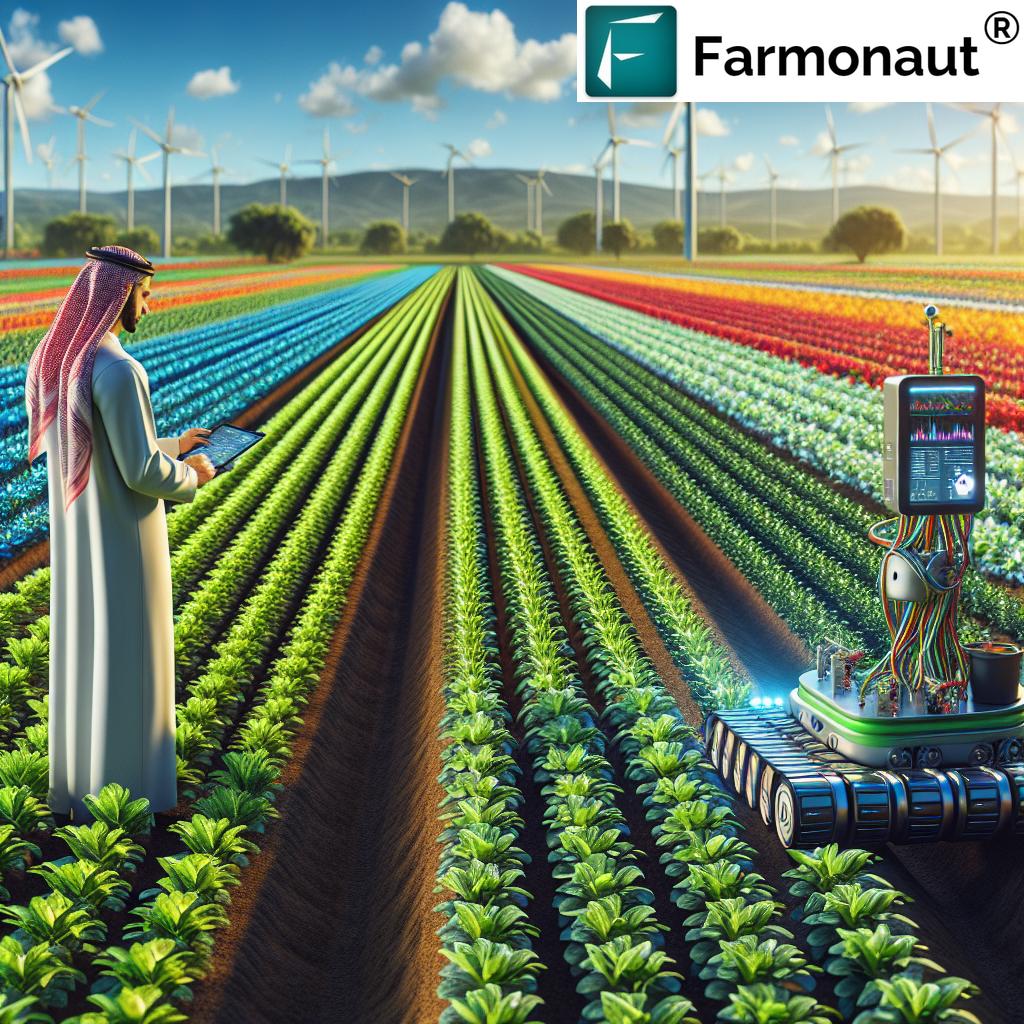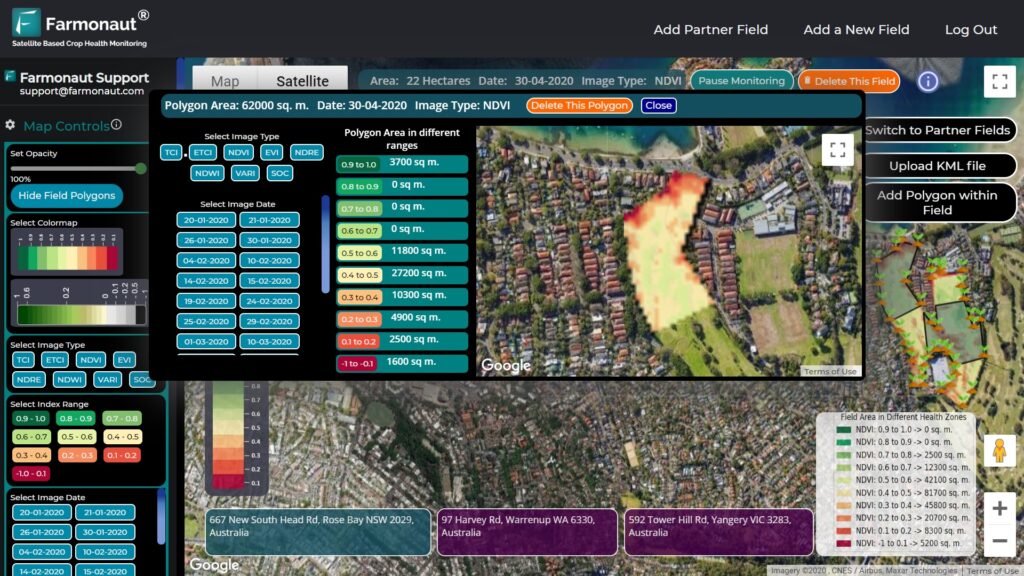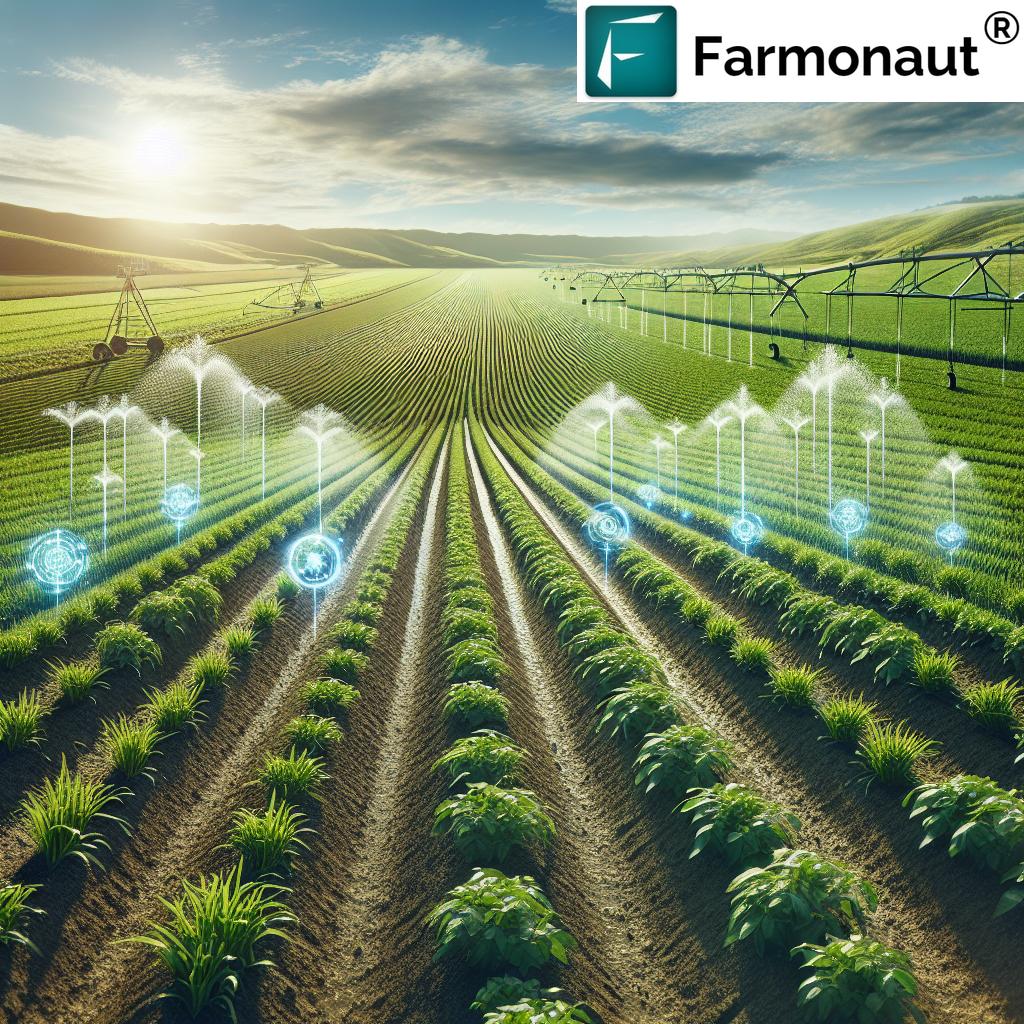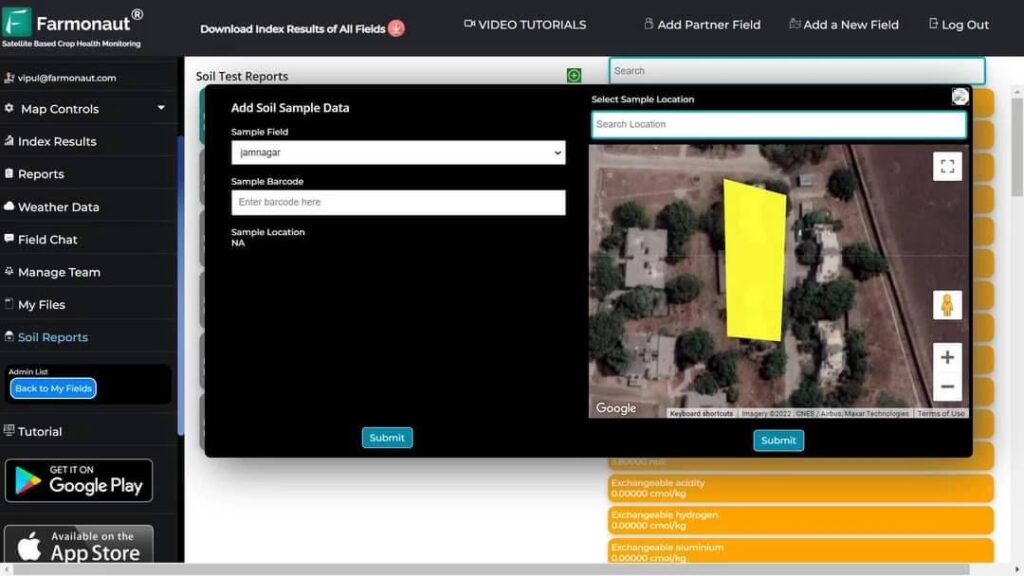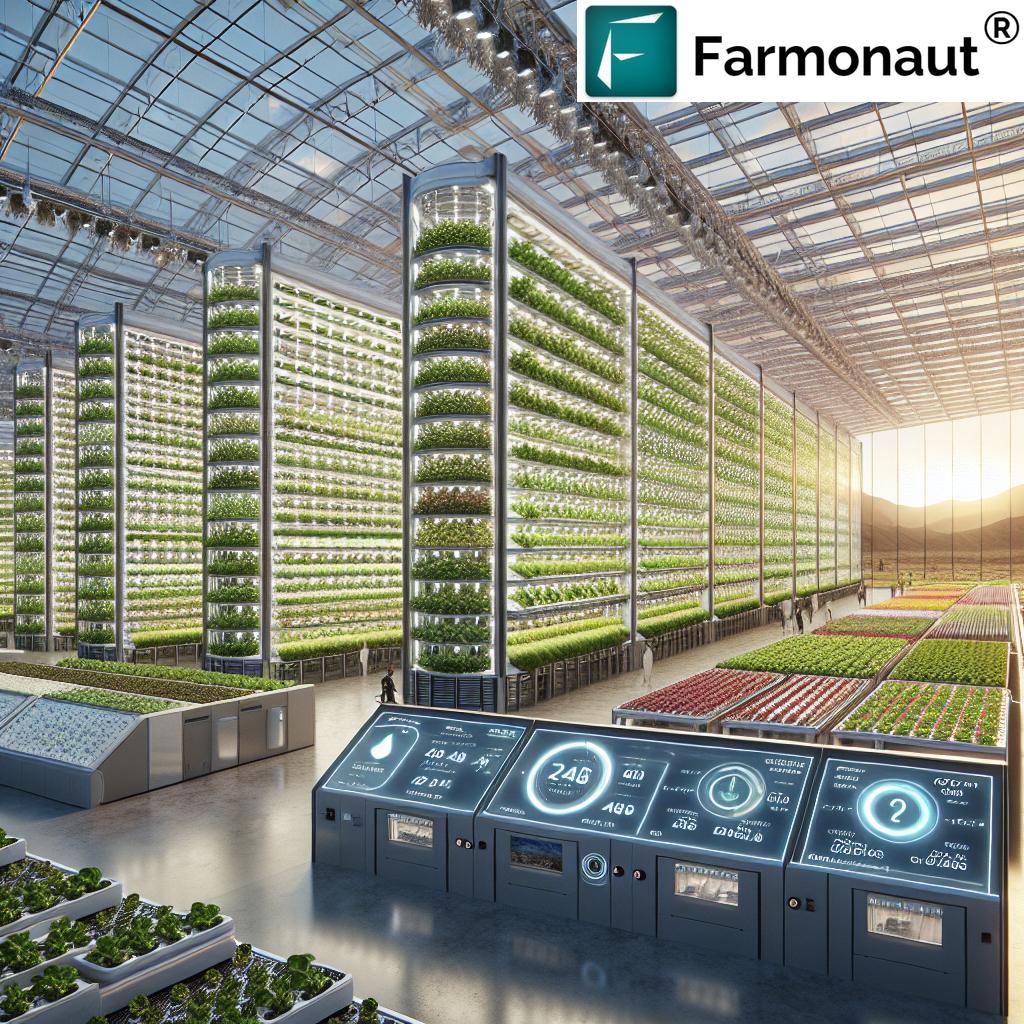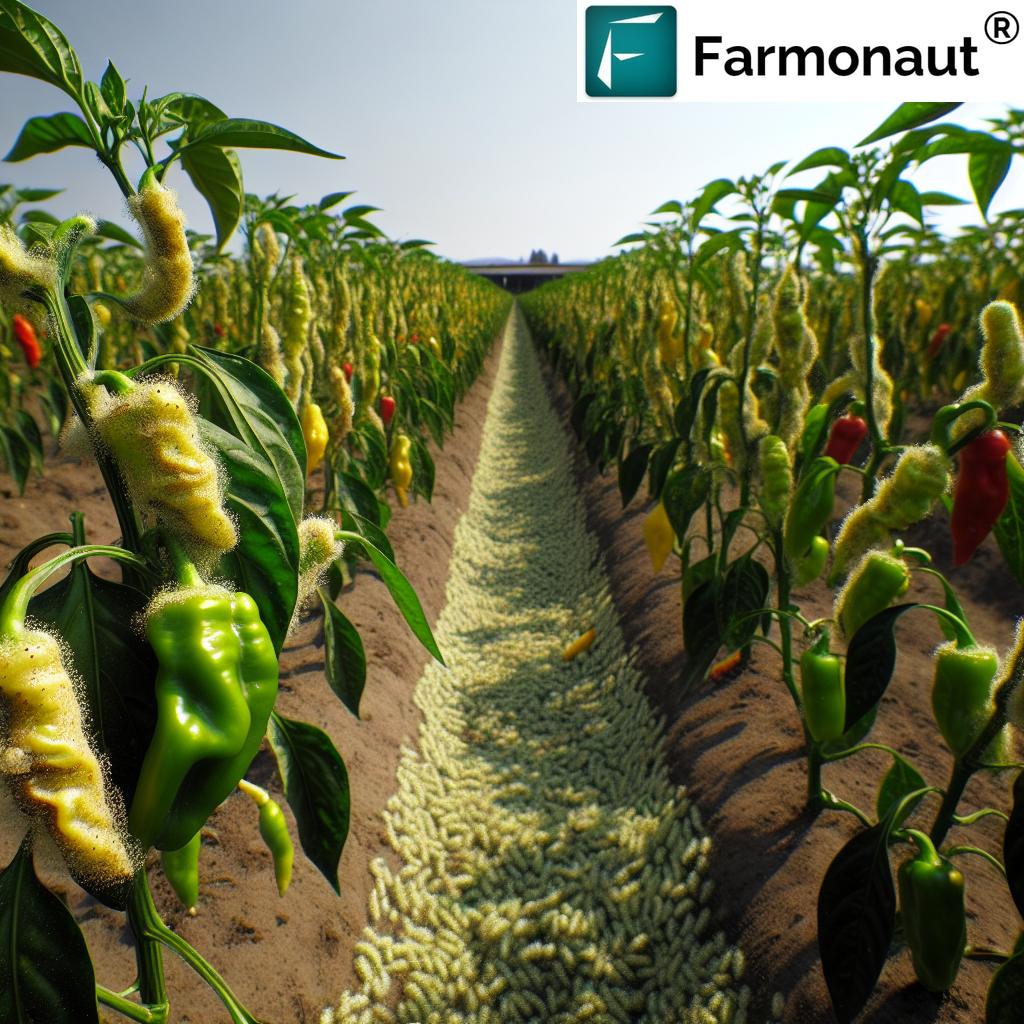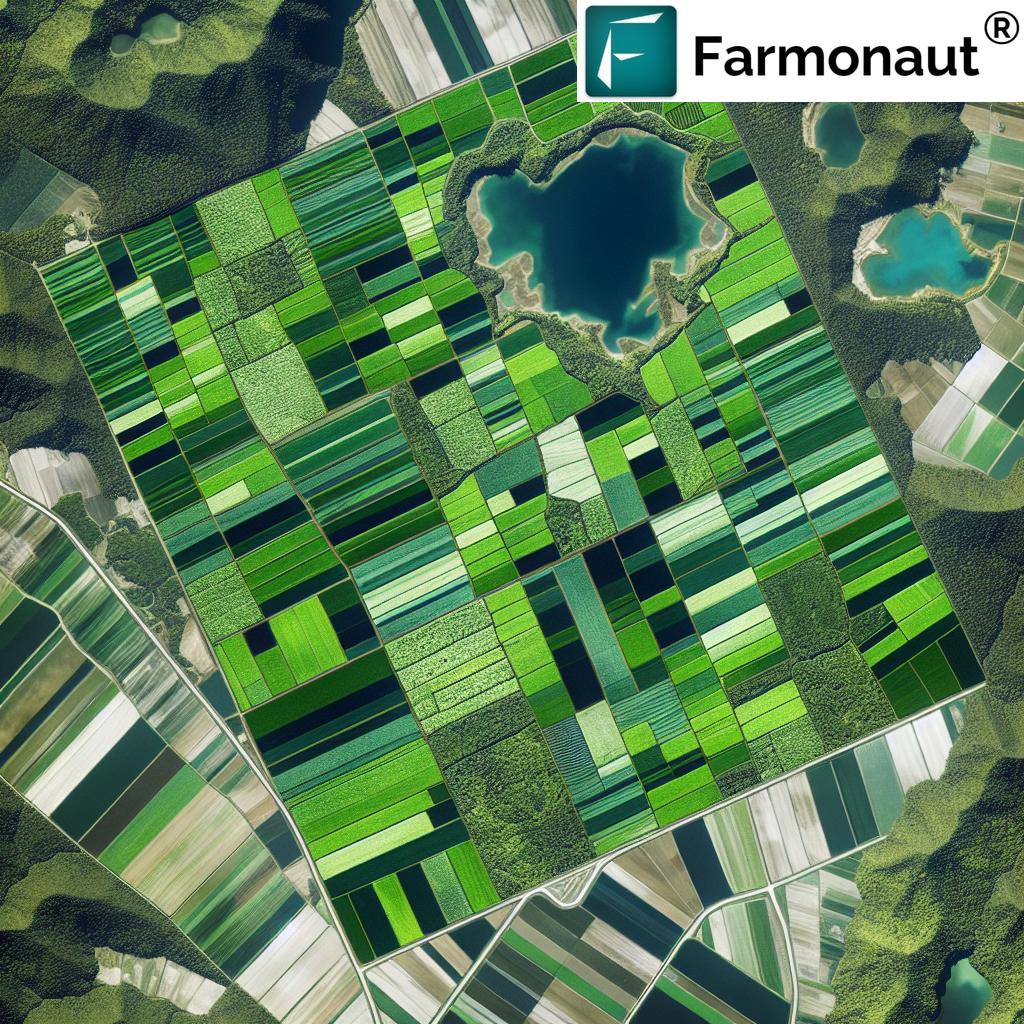Effective Chemical Control Strategies for Jassids and Semilooper: A Farmer’s Guide

In the ever-evolving world of agriculture, staying ahead of pest infestations is crucial for maintaining healthy crops and ensuring optimal yields. At Farmonaut, we understand the challenges farmers face when dealing with persistent pests like jassids and semiloopers. In this comprehensive guide, we’ll delve into effective chemical control strategies for these destructive insects, while also highlighting how our satellite-based farm management solutions can revolutionize your pest management approach.
Understanding Jassids and Semiloopers
Before we dive into control strategies, let’s briefly explore these two common agricultural pests:
Jassids
Jassids, also known as leafhoppers, are small, wedge-shaped insects that feed on plant sap. They’re particularly problematic in cotton, okra, and various vegetable crops. Jassid infestations can lead to:
- Leaf curling and yellowing
- Stunted plant growth
- Reduced yield
- Transmission of plant viruses
Semiloopers
Semiloopers are caterpillars of certain moth species. They get their name from their unique “looping” movement. These pests can cause significant damage to crops such as:
- Soybeans
- Groundnuts
- Sunflowers
- Various vegetable crops
Semilooper damage typically includes:
- Defoliation
- Feeding on flowers and developing pods
- Reduced photosynthesis
- Yield loss
The Importance of Integrated Pest Management (IPM)
Before we delve into chemical control methods, it’s essential to emphasize the importance of Integrated Pest Management (IPM). At Farmonaut, we advocate for a holistic approach to pest control that combines various strategies to minimize environmental impact and promote sustainable agriculture.
IPM includes:
- Cultural control methods (crop rotation, resistant varieties)
- Biological control (natural predators)
- Mechanical control (traps, barriers)
- Chemical control (as a last resort)
Our satellite-based crop monitoring system plays a crucial role in IPM by providing early detection of pest infestations, allowing farmers to take timely action and potentially reduce the need for chemical interventions.
Jassids Chemical Control Strategies
When other IPM methods prove insufficient, chemical control may be necessary for managing jassid populations. Here are some effective strategies for jassids chemical control:
1. Systemic Insecticides
Systemic insecticides are absorbed by the plant and distributed throughout its tissues, making them effective against sap-sucking pests like jassids.
- Imidacloprid: A widely used neonicotinoid that provides long-lasting control.
- Thiamethoxam: Another effective neonicotinoid with good systemic activity.
- Acetamiprid: Offers rapid knockdown and residual control.
Application rate: Follow label instructions, typically 20-30 g a.i./ha
2. Contact Insecticides
Contact insecticides kill pests upon direct exposure and can be useful for quick knockdown of jassid populations.
- Lambda-cyhalothrin: A broad-spectrum pyrethroid effective against various pests.
- Deltamethrin: Another pyrethroid with good efficacy against jassids.
- Bifenthrin: Provides rapid control and has some residual activity.
Application rate: Generally 10-15 g a.i./ha, but always consult the product label
3. Insect Growth Regulators (IGRs)
IGRs interfere with the pest’s growth and development, offering a more targeted approach.
- Buprofezin: Inhibits chitin synthesis, affecting molting and egg-laying.
- Pyriproxyfen: Mimics juvenile hormone, disrupting metamorphosis.
Application rate: Typically 50-100 g a.i./ha, depending on the product
4. Neem-based Products
For farmers seeking more natural options, neem-based insecticides can be effective against jassids while being relatively eco-friendly.
- Azadirachtin: The active compound in neem, which acts as a feeding deterrent and growth regulator.
Application rate: Usually 1-2% concentration, applied at 7-10 day intervals
Semilooper Chemical Control Strategies
Semiloopers can quickly defoliate crops if left unchecked. Here are effective semilooper chemical control methods:
1. Synthetic Pyrethroids
Pyrethroids are effective against a wide range of lepidopteran pests, including semiloopers.
- Cypermethrin: Fast-acting with good residual activity.
- Fenvalerate: Effective against various caterpillar species.
- Alpha-cypermethrin: Provides rapid knockdown of pests.
Application rate: Usually 25-50 g a.i./ha, but always check the label
2. Diamide Insecticides
Diamides are a newer class of insecticides that are highly effective against lepidopteran pests.
- Chlorantraniliprole: Offers excellent control with low environmental impact.
- Flubendiamide: Provides long-lasting protection against semiloopers.
Application rate: Typically 30-60 g a.i./ha, depending on the product
3. Bacillus thuringiensis (Bt) Products
Bt is a biological insecticide that’s particularly effective against caterpillars while being safe for beneficial insects.
- Bt kurstaki: Specific to lepidopteran pests.
- Bt aizawai: Effective against a broader range of caterpillar species.
Application rate: Follow label instructions, usually applied at 0.5-2 kg/ha
4. Spinosyns
Derived from soil bacteria, spinosyns offer effective control with a unique mode of action.
- Spinosad: Provides excellent control of semilooper larvae.
- Spinetoram: A newer generation spinosyn with improved efficacy.
Application rate: Generally 45-60 g a.i./ha, but consult the product label
Best Practices for Chemical Control
To ensure the effectiveness of your chemical control strategies while minimizing environmental impact, follow these best practices:
- Rotate insecticide classes: This helps prevent the development of resistance in pest populations.
- Time applications carefully: Apply insecticides when pests are most vulnerable, often in their early larval stages.
- Use appropriate spray technology: Ensure good coverage of the crop canopy for maximum efficacy.
- Follow recommended dosages: Over-application can lead to environmental issues and pest resistance.
- Observe pre-harvest intervals: This ensures that residues are within safe limits at harvest time.
- Protect beneficial insects: When possible, choose selective insecticides that spare natural predators.
- Monitor weather conditions: Avoid spraying during windy conditions or when rain is imminent.
How Farmonaut Enhances Pest Management
At Farmonaut, we’re revolutionizing pest management through our advanced satellite-based farm monitoring system. Here’s how our technology can complement your chemical control strategies:
- Early Detection: Our satellite imagery can detect subtle changes in crop health, potentially indicating pest infestations before they become visible to the naked eye.
- Precision Application: By identifying specific areas of infestation, we help you target your chemical applications more precisely, reducing overall pesticide use.
- Monitoring Efficacy: Post-treatment, our system can track the effectiveness of your pest control measures through continued vegetation health monitoring.
- Data-Driven Decisions: Our AI-powered advisory system, Jeevn AI, integrates pest monitoring data with weather forecasts and crop stage information to provide tailored pest management recommendations.
- Historical Analysis: By maintaining a record of pest outbreaks and control measures, we help you develop more effective long-term strategies.
To experience the power of satellite-based farm management, visit Farmonaut’s web application or download our mobile app for Android or iOS.
Farmonaut vs. Traditional Monitoring Methods
Here’s how our satellite-based system compares to traditional farm monitoring methods:
| Feature | Farmonaut Satellite System | Drone-based Monitoring | IoT Sensors |
|---|---|---|---|
| Coverage Area | Entire farm at once | Limited by flight time and regulations | Point-based data collection |
| Frequency of Updates | Daily to weekly, depending on subscription | As often as flights are conducted | Real-time, but limited to sensor locations |
| Initial Setup Cost | Low (subscription-based) | High (equipment and training) | Moderate to high (sensors and network) |
| Maintenance | None required | Regular equipment maintenance | Sensor calibration and replacement |
| Data Analysis | AI-powered, automatic | Often requires specialized software and expertise | Depends on the system, can be complex |
| Weather Independence | Can see through clouds with radar satellites | Limited by weather conditions | Generally weather-independent |
| Scalability | Easily scalable to any farm size | Challenging for very large areas | Requires additional sensors for larger areas |
Integrating Chemical Control with Farmonaut’s Technology
To maximize the effectiveness of your pest management strategy, consider integrating chemical control methods with Farmonaut’s advanced monitoring capabilities:
- Pre-treatment Assessment: Use our satellite imagery to identify areas of stress or potential infestation before applying any chemicals.
- Targeted Application: Based on our vegetation health maps, apply chemicals only to affected areas, reducing overall pesticide use.
- Post-treatment Monitoring: Track the effectiveness of your chemical applications through our continuous monitoring system.
- Data-Driven Timing: Utilize our weather forecasts and crop stage information to time your chemical applications for maximum efficacy.
- Long-term Strategy Development: Analyze historical data from our platform to develop more effective, sustainable pest management strategies over time.
The Future of Pest Management
As we look to the future, the integration of advanced technologies like satellite monitoring, AI, and precision application systems will play an increasingly important role in pest management. At Farmonaut, we’re committed to staying at the forefront of these innovations, continuously improving our services to help farmers tackle pest challenges more effectively and sustainably.
Some emerging trends we’re excited about include:
- Hyperspectral Imaging: This technology could allow for even earlier detection of pest infestations by identifying subtle changes in plant biochemistry.
- Machine Learning Models: Advanced AI models could predict pest outbreaks based on historical data, weather patterns, and crop conditions.
- Precision Spraying Drones: By integrating our satellite data with autonomous drones, ultra-precise pesticide application could become a reality.
- Blockchain for Traceability: Our blockchain-based traceability system could extend to pest management, ensuring transparent and responsible use of pesticides.
Conclusion
Effective pest management, particularly for persistent threats like jassids and semiloopers, requires a multifaceted approach. While chemical control remains an important tool in the farmer’s arsenal, its integration with advanced monitoring technologies like Farmonaut’s satellite-based system can lead to more precise, efficient, and sustainable pest management practices.
By combining the targeted use of insecticides with real-time crop monitoring, weather forecasting, and data-driven decision-making, farmers can stay one step ahead of pest infestations while minimizing environmental impact and optimizing resource use.
We invite you to explore how Farmonaut can revolutionize your approach to pest management and overall farm productivity. Visit our web application or download our mobile app to get started. For developers interested in integrating our technology into their own solutions, check out our API documentation.
Subscribe to Farmonaut
Frequently Asked Questions (FAQ)
Q1: How often should I apply chemical controls for jassids and semiloopers?
A1: The frequency of chemical applications depends on various factors, including pest pressure, crop stage, and environmental conditions. Generally, applications should be made when pest populations reach economic thresholds. Our Farmonaut system can help you monitor pest pressure and determine the optimal timing for applications.
Q2: Are there any organic alternatives to chemical control for these pests?
A2: Yes, there are several organic options, including neem-based products, Bacillus thuringiensis (Bt) formulations, and certain botanical insecticides. These can be effective when used as part of an integrated pest management strategy.
Q3: How can Farmonaut’s satellite monitoring help reduce pesticide use?
A3: Our satellite monitoring system can detect early signs of pest infestation, allowing for targeted and timely interventions. This precision approach often results in reduced overall pesticide use compared to blanket applications.
Q4: Is it safe to mix different insecticides for better control?
A4: While some insecticide mixtures can be effective, it’s crucial to only use combinations that are explicitly recommended by agricultural experts or stated on product labels. Improper mixing can lead to reduced efficacy or even crop damage.
Q5: How does weather affect the efficacy of chemical controls?
A5: Weather conditions can significantly impact the effectiveness of pesticide applications. Factors like temperature, humidity, wind speed, and the likelihood of rain should all be considered. Farmonaut’s weather forecasting feature can help you plan your applications for optimal conditions.
Q6: Can Farmonaut’s system detect pesticide resistance in pest populations?
A6: While our system doesn’t directly detect resistance, it can help identify patterns of pest resurgence after treatments, which may indicate developing resistance. This information can be valuable for adjusting your pest management strategy.
Q7: How do I balance chemical control with protecting beneficial insects?
A7: Choose selective insecticides when possible, and time applications to minimize impact on beneficial insects. Our monitoring system can help you target applications more precisely, reducing exposure to non-target organisms.
Q8: Are there any new insecticides on the horizon for jassid and semilooper control?
A8: The development of new pesticides is an ongoing process. While we can’t disclose specifics about unreleased products, our system is regularly updated to include recommendations for the latest approved and effective pest control options.
Q9: How can I access historical pest data for my farm through Farmonaut?
A9: Historical pest data and treatment records are available through our web and mobile applications. This feature allows you to analyze past infestations and the effectiveness of your management strategies over time.
Q10: Can Farmonaut’s system help me comply with regulations on pesticide use?
A10: Yes, our system includes up-to-date information on approved pesticides and application rates. Additionally, our record-keeping features can help you maintain documentation of your pest management practices, which is often required for regulatory compliance.

By leveraging Farmonaut’s advanced satellite monitoring and AI-powered advisory system, alongside judicious use of chemical controls, farmers can develop robust, effective, and sustainable strategies for managing jassids, semiloopers, and other agricultural pests. Remember, the key to successful pest management lies in a holistic, integrated approach that considers all available tools and technologies.

